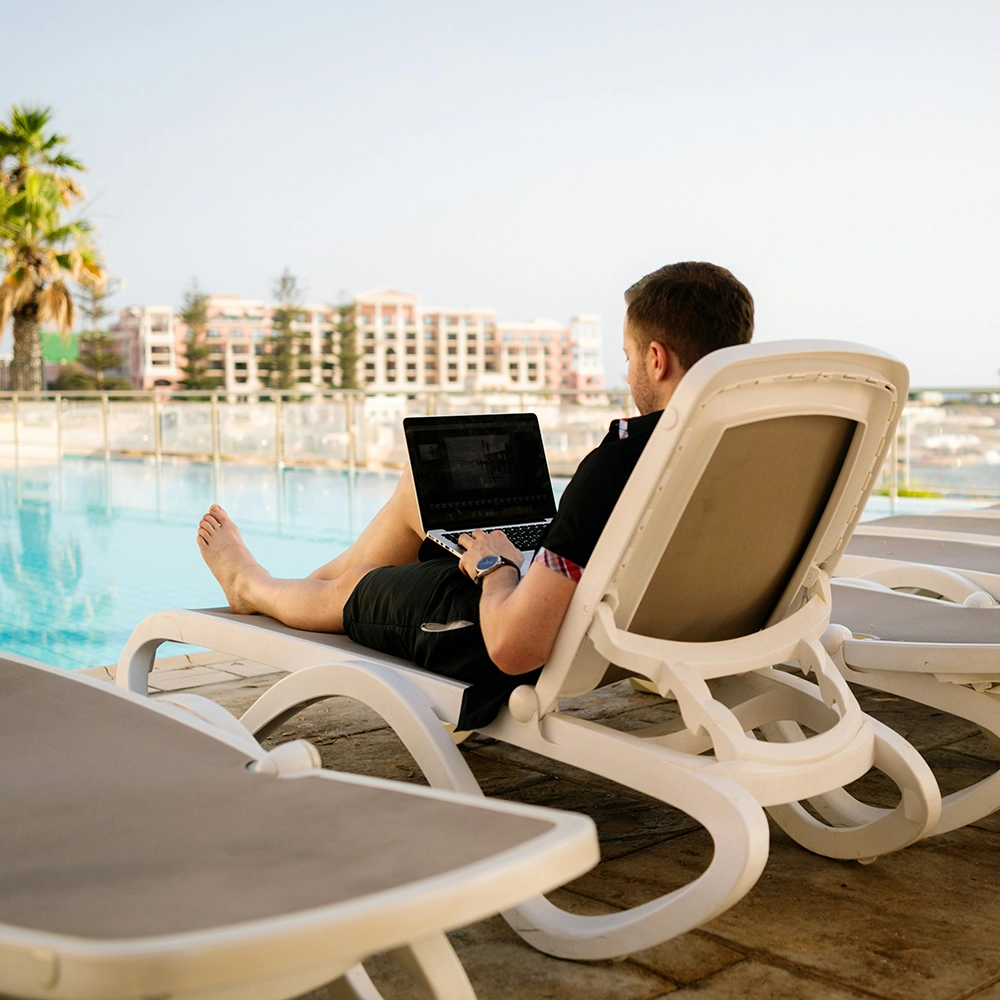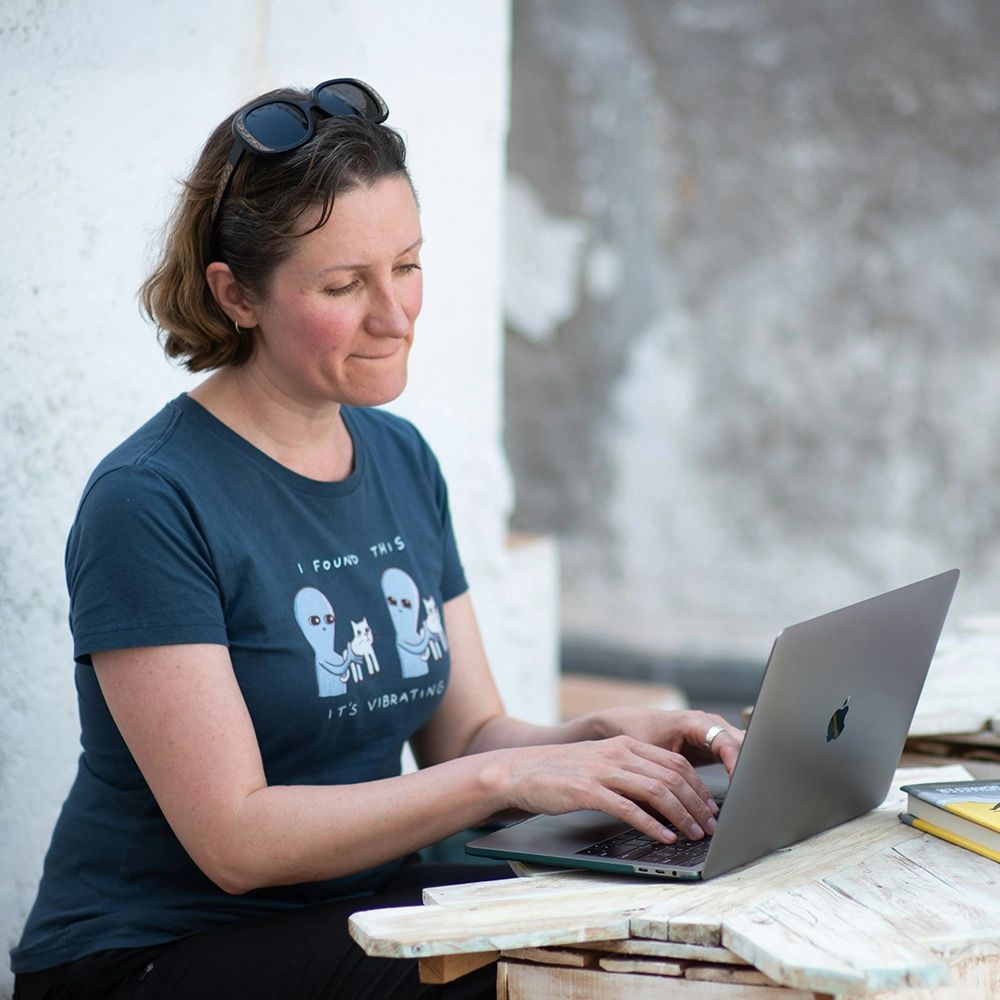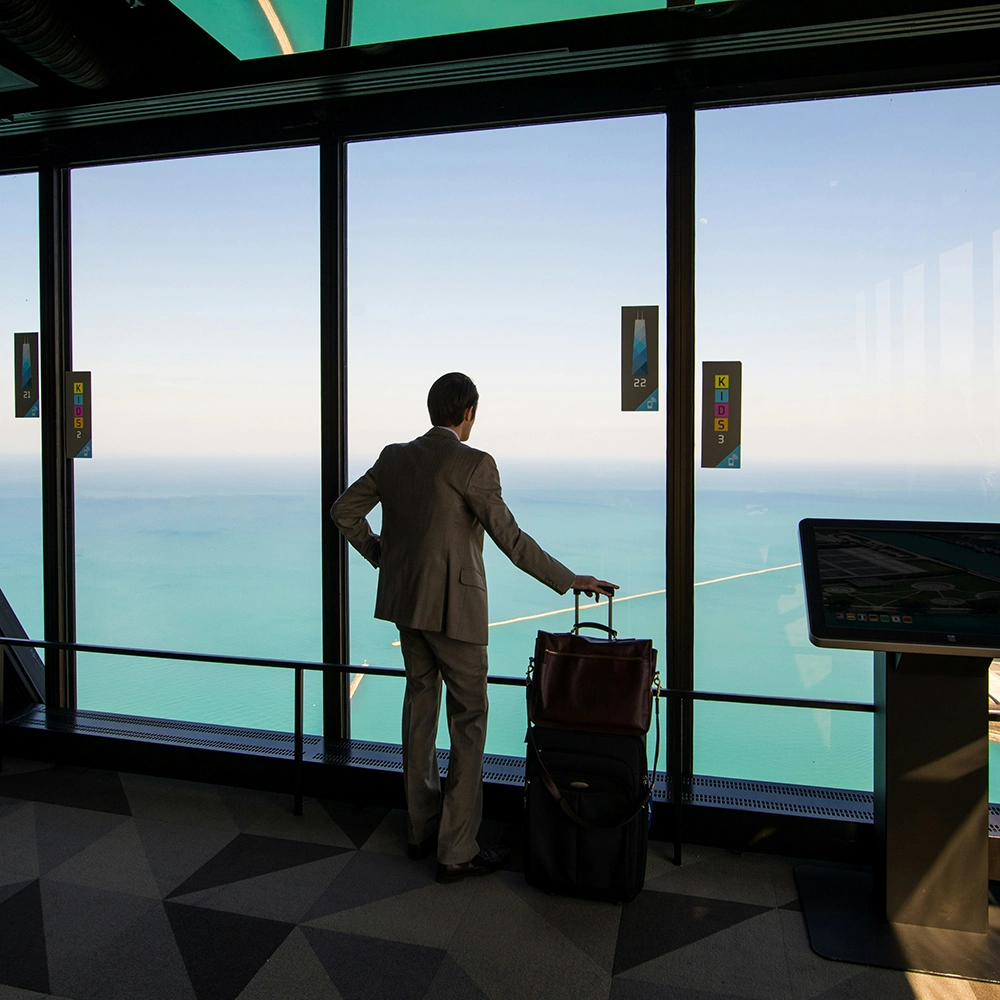Even if you haven’t heard the terms “bleisure travel” or “workcation” yet, you’re probably familiar with the concept. These silly-sounding word mashups are part of a growing trend as more people see the benefits of mixing business with leisure in a single trip.
If you’re dreaming of traveling for free on someone else’s dime — in this case, your employer’s — we have you covered. Here’s everything you need to know about bleisure travel.
What Is a Workcation?
The most popular form of workcation or bleisure travel is when an employee is traveling for business and extends the trip a few extra days, thus turning the business trip into a leisure vacation of sorts.
On trips like these, travelers can get flights paid for by their companies or receive a business rate on airline tickets. They might have at least some of their hotel stay and other expenses paid for, too.
Bleisure Travel’s Value of Work-Life Balance
Named the biggest business travel trend by TravelPulse as early as 2019, bleisure is more than just a temporary fad. It’s definitely picked up steam in the aftermath of the COVID pandemic as employees gained more remote work options and renewed their commitment to better work-life balance.
In a survey by National Car Rental, 93% of bleisure travelers reported high levels of satisfaction with their quality life compared to just 75% of conventional business travelers. Additionally, 87% of bleisure travelers were satisfied with their level of work-life balance. Only 64% of traditional business travelers claimed the same.
The reasoning is that business travel isn’t as glamorous as it sometimes sounds. Long days in transit can eat into personal time and add to regular stresses of work.
If you extend your trip, though, and tag on some more relaxing leisure time, the time in the airport, limited dining options, and other stresses have less of a negative impact.
In other words, there’s a better balance between professional obligations and personal desires.
How to Prepare for a Workcation
Learn your employer’s policies.
Before planning the leisure portion of their trip, employees should understand their organization’s travel and vacation policies.
- Is requesting and reporting paid time off different if your vacation is part of a business trip?
- What systems are in place for managing and reporting personal travel expenses?
- Can you take a friend or family member with you?
- Is an employer responsible for providing assistance in the event of an emergency?
For long-distance trips, it may be necessary for an employee to purchase travel insurance, especially for extended leisure travel. Regardless of the organization, employees should discuss relevant policies with their managers and HR personnel before combining personal travel with business.
Decide if you’re going to tell your boss.
Despite bleisure’s growing popularity, it is not an accepted practice in all workplaces. In fact, a Monster poll found that about 30% of respondents didn’t think their boss needed to know if they were taking a workcation and another 20% didn’t think their boss would approve of one.
That National Car Rental survey we mentioned earlier similarly found that 45% of millennial bleisure travelers feel they should avoid telling others — including their bosses — about taking time for leisure while on a business trip.
This sort of secret approach to workcations is how we get the “hush trip.” We don’t think you’re obligated to tell your employer how you spend your personal time, but you should consider your options carefully.
Set boundaries.
Because smartphones, tablets, and cloud-based file management systems make it easier than ever to work from anywhere, it can be challenging to strike a balance between work and time off. For the best possible trip, set clear boundaries around work time and leisure time.
Communicate with your manager and team about what your availability is. Will you still be online during regular business hours or is your time more flexible? Can they contact you via text for anything or only in emergencies? Restricting access to workplace communications is an easy way keep the leisure portion of a bleisure trip stress-free.
If going cold turkey on work tasks isn’t possible, the next best option is to set dedicated times to check in on emails and projects. As Mark Twain so aptly put it, “Eat a live frog first thing in the morning and nothing worse will happen to you the rest of the day.”
If possible, try treating work tasks like the proverbial live frog. Get those to-do items done first thing to free up the rest of the day for relaxation and fun.
Choose your travel companions.
You might see one of the perks of a workcation as having a chance to really, truly escape and unplug — no work and, because the trip started out with a professional objective, you might have an excuse to leave everyone else at home, too. Talk about a getaway.
You might want to bring someone with you, though. One of the benefits of bleisure travel is that work is paying some of the bills. Suddenly a trip for two costs less than it normally would.
Seven Corners writer Grace Lower took full advantage of this when funds were tight.
“Between living in a fairly expensive city, saving money for ‘practical’ purchases, and gearing up to start grad school in the fall, I decided to put my international travel aspirations on hold,” she said. “My plans for a subdued summer started to change when my boyfriend, Josh, announced that he would be attending an academic conference in Italy.
“Because this conference was affiliated with my boyfriend’s job, his flights, hotels, and meals would be covered for the duration of the event. Since this would be Josh’s first visit to Italy, he decided to extend his trip by an additional week beyond the end of the conference. He would use this extra time to see more of the city and visit a few nearby destinations, as well. Like any good millennial, I immediately agreed when Josh asked if I wanted to join him for ‘part two’ of his European travels.”
Before the trip, Grace wasn’t sold on the idea of bleisure. She liked the idea of clearer boundaries between work and play. But she eventually came around to the see the benefits, calling it “a cost-effective, professionally advantageous, and downright exciting way to give an unexpected dose of adventure in what would have been a perfectly average summer.”
Plan your workcation.
The work part of your trip is probably taken care of. How you want to spend the leisure portion is entirely up to you.
First up, decide if you want the vacation portion of your trip to fall before or after your work obligations. Most people prefer after so that they can fully unwind when all the responsibilities and work are finished.
When Grace joined her boyfriend in Italy, they scheduled their leisure for after the event. “Once the conference is over, Josh and I will have more than a week of leisure travel ahead,” she said before the trip. “No emails, no projects, no presentations in sight — just the European countryside and plenty of amazing food.
“This trip won’t be entirely free of work, but by front-loading the bulk of our professional activities at the start of the trip, we are ensuring that we can more fully enjoy the ‘fun’ portion of our vacation.”
If you have the flexibility to schedule your work trips, see if you can time them near a long weekend or public holiday so you can extend your trip without using as much paid vacation time.
Finally, create an itinerary like you would for any other trip. Find the perfect place to stay (assuming you aren’t staying in the same hotel that work paid for), research some can’t-miss activities, and book a dinner treat at a drool-worthy restaurant.
Of course, look for activities and attractions close to your temporary home base, but remember that there’s also nothing keeping you in the spot where you're doing business.
Choose your destination.
Your destination, to an extent, has already been chosen for you. The conference essentially chose Italy for Grace and Josh. You can choose, though, if you’d rather stay in one place or bounce around to multiple destinations.
A survey by Great Hotels of the World shows that 28% of bleisure travelers don't stay in the same location for business and leisure. There’s no rule that you can’t rent a car and drive to an amazing second destination or discover beauty in an area you may not have considered for vacation otherwise.
Use the intensity of your work obligations as a guide for this. If you’re coming off a stressful round of presentations, you might set up a single home base and try slow travel so you can relax more fully. If you think you’ll be energized from work, why not spread your wings!
Make the Most of Any Trip with Seven Corners
Bleisure travel changed Grace’s summer vacation plans for the better. What could have been a hum-drum summer turned into an Italian adventure. She began planning her workcation nearly seven months in advance, so she had plenty of time to get her boss’s approval and make a plan for work coverage while she was away on the vacation portion of her trip.
Planning is such a key part of making the most of any trip, whether it’s as a digital nomad, a weeklong workcation, or a pure getaway just for you. Find more tips and tricks for making the most of your travel at SevenCorners.com.
And when you’re ready to protect your adventures from trip cancellation, lost baggage, illness, and more, look into travel insurance. Our quick quote tool and licensed agents make it simple to find the best coverage for you.



